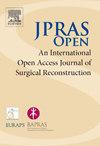Exploring the venous supply of the face: An illustrated overview of contemporary literature
IF 1.5
Q3 SURGERY
引用次数: 0
Abstract
Understanding the vascular anatomy of the face is crucial for ensuring safe clinical practices, especially as aesthetic procedures involving hyaluronic acid fillers are gaining popularity. Although vascular complications from these procedures are rare, there has been a documented increase in adverse events linked to venous and arterial occlusions. This review addresses the knowledge gap regarding the facial venous system compared to the well-documented facial artery system, emphasising the importance of thorough anatomical knowledge to mitigate risks during injectable cosmetic procedures. The complex and variable anatomy of the facial veins, including connections to the intracerebral venous system, allows for the retrograde spread of infections and fillers, with key tributaries such as the angular and infraorbital veins facilitating communication with the cavernous sinus. Notably, the absence of valves in certain venous regions can lead to retrograde filler flow, exacerbating complications. This illustrated review provides an analysis of the facial venous anatomy, focusing on the distribution and depth of venous structures, and aims to equip practitioners with insights that can help reduce the incidence of vascular complications associated with cosmetic procedures.
探索面部静脉供应:图文并茂的当代文献概览。
了解面部的血管解剖结构对于确保安全的临床实践至关重要,特别是当涉及透明质酸填充物的美容手术越来越受欢迎时。虽然这些手术的血管并发症很少见,但有文献记载的与静脉和动脉闭塞相关的不良事件增加。这篇综述解决了关于面部静脉系统与有充分文献记载的面部动脉系统的知识差距,强调了全面的解剖学知识对于降低注射美容手术风险的重要性。面部静脉的复杂多变的解剖结构,包括与脑内静脉系统的连接,允许感染和填充物的逆行传播,关键的分支,如角静脉和眶下静脉,促进与海绵窦的交流。值得注意的是,某些静脉区域缺少瓣膜可导致填充物逆行流动,加剧并发症。这篇有插图的综述提供了面部静脉解剖学的分析,重点是静脉结构的分布和深度,旨在为从业者提供见解,帮助减少与美容手术相关的血管并发症的发生率。
本文章由计算机程序翻译,如有差异,请以英文原文为准。
求助全文
约1分钟内获得全文
求助全文
来源期刊

JPRAS Open
Medicine-Surgery
CiteScore
1.60
自引率
0.00%
发文量
89
审稿时长
22 weeks
期刊介绍:
JPRAS Open is an international, open access journal dedicated to publishing case reports, short communications, and full-length articles. JPRAS Open will provide the most current source of information and references in plastic, reconstructive & aesthetic surgery. The Journal is based on the continued need to improve surgical care by providing highlights in general reconstructive surgery; cleft lip, palate and craniofacial surgery; head and neck surgery; skin cancer; breast surgery; hand surgery; lower limb trauma; burns; and aesthetic surgery. The Journal will provide authors with fast publication times.
 求助内容:
求助内容: 应助结果提醒方式:
应助结果提醒方式:


